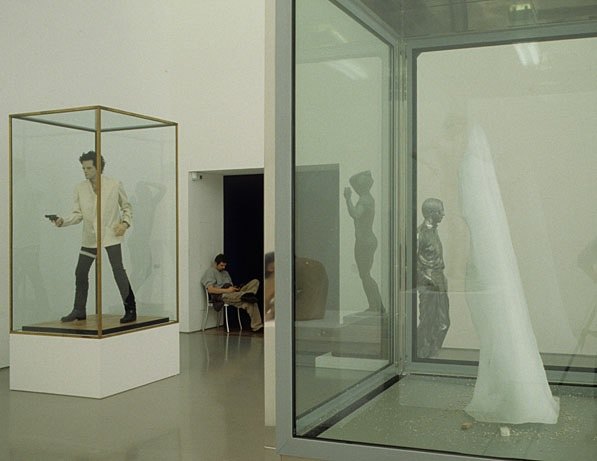Exhibitions2002Second Skin

Second Skin
16 Feb - 12 May 02
Historical life casting and contemporary culture
Henry Moore Institute
Second Skin explores the connections between the process of life casting and figurative sculpture. The exhibition also provides an opportunity to compare how casting was used by nineteenth-century sculptors and how it is used today. Historical examples have been selected from a survey exhibition at the Musée d’Orsay entitled ‘A Fleur de Peau’. As the interest in life casting has been revived, The Institute has decided to display the historical pieces alongside sculptures by Duane Hanson, John De Andrea, Paul Thek and Robert Gober, and contemporary examples by Jordan Baseman, Don Brown, Siobhan Hapaska, Abigail Lane, Sarah Lucas, Marc Quinn and Gavin Turk.
In the nineteenth century the use of life casts was a standard part of artistic practice. Casting could, however, be a controversial topic. Although it was acceptable for a sculptor to combine modelling and casting, a direct cast could not be presented as a finished artwork. Sometimes, the polemic became public - the scandal surrounding Rodin’s ‘Age of Bronze’ being the most famous occasion. As well as the casts artists used for their own use, the exhibition will include a small selection of academic, phrenological and ethnographical casts, alongside medical, zoological and botanical ones to illustrate how widely spread the art of casting was.
The interest in realism and life casting re-emerged in America in the 1970s and 80s. The work of Hanson and De Andrea was subject to criticism, as if casting was still regarded as cheating. More recently, works by British artists, like Brown, Quinn and Turk, have allowed the viewer to scrutinise the human face and figure to a degree that is not normally possible, and to muse on the fundamental facts of life and death as well as more transient aspects of contemporary culture - like fame and beauty. Others, like Hapaska and Lucas, have occasionally been tempted by the primal possibilities of human simulacra with dramatic results.
Brought together for Second Skin, the historical and contemporary works will illustrate the diversity of the casting technique, its disparate uses and influences, and will focus on its often-perplexing relationship to sculpture. The exhibition will explore ideas of fragmentation, surface, colour and realism and the effects of casting on portraiture and figuration - continuing a line of inquiry which, for the Institute, began with the exhibitions ‘Return to Life’ and ‘Taking Positions’.
Second Skin has been organised in collaboration with the Musée d’Orsay, Paris, the Kunsthalle, Hamburg and the Museo Vela, Ligornetto.
